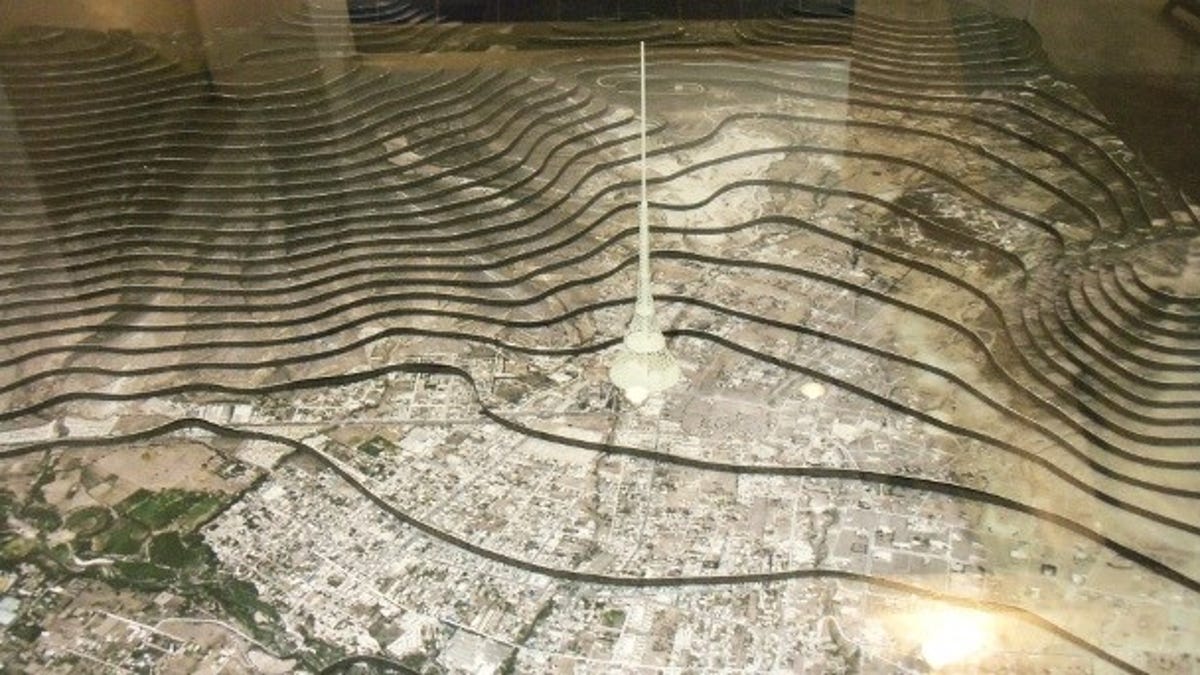World's tallest tower to overshadow monumental goof in Ecuador
A new monument to the middle of the world would be nearly 3 miles above sea level, twice as high as the current tallest building on the globe. Thanks to modern GPS, it will also stand just where it should.

MITAD DEL MUNDO, Ecuador--The effort to mark exactly where the equator traverses this tiny country roughly the size of Colorado -- if Colorado were filled with not just tall, jagged mountains, but also with jungle and rainforest and swamp and humid lowlands -- has been filled with centuries of folly and misplaced monuments. Now a provincial government in Ecuador wants to finally get it right, and make a big statement at the same time.
Despite being the longest way around the Earth, the equator is relatively hard to get to. Just take a look at your globe (OK, Google Earth will do) and you'll notice it passes through an awful lot of empty ocean, some remote islands, the Amazon, and some typically inaccessible parts of Africa. These raw geographic realities have made Ecuador particularly important for those on a quest for middle earth (not Middle Earth) for centuries.
The equator's alleged location not far from the high mountain capital city of Quito first attracted French and Spanish geographers sent in the 1700s by King Louis XV of France to determine once and for all whether the Earth was broader at its midsection or at the poles. The expedition led by Charles Marie de La Condamine helped prove that the Earth was neither flat like a pancake nor some sort of bizarre hourglass shape. Along the way, they also placed the actual equator with remarkable accuracy along a parallel just north of Quito.
Two centuries later, a monument was built along that line at a spot nearest the capital city in the Andean foothills. In recent decades, the monument has grown into a sprawling tourist trap of shops, restaurants, small museums, a planetarium, and of course, the multi-story tower placed right on the equator itself with accompanying dividing line running along the ground where camera-toting visitors snap shots of themselves in both hemispheres at once.
There's just one problem. Modern GPS technology has since determined that the whole complex is off the mark by a few hundred meters.
Today, guidebooks and countless travel blog entries advise tourists to visit the "official" and inaccurate monument for a requisite photo op, and then quickly scamper around the corner and down a short dirt road to a piece of private property where the smaller and privately owned "Museo de Sitio Intinan" claims to be built on the actual, exact navel of the Earth (a claim they're happy to demonstrate with some seemingly rigged demonstrations of water draining clockwise on one side of the line, and in the other direction just a few feet on the other side).
Even today, though, the debate rages on the Web over whether the actual equator is at the Museo Intinan or out on the street, depending on which mobile device and positioning software visitors have used to measure the latitude.
The spiel from guides at Museo Intinan is that "military GPS" first determined that the official monument was off the mark back in the 1990s (construction on it was finished in 1982). The small museum, which actually consists largely of displays and things in jars relating to Amazonian indigenous cultures, claims to have been in existence since 1960, but has only become a popular destination for equator seekers in the past decade or so.
The government of Pichincha province, which maintains the official "Mitad del Mundo" complex and monument doesn't acknowledge anywhere on the site that its whole reason for being actually lies just to the north. So I'll just call it an "informed coincidence" that the same government is proposing a new structure to mark the actual equator. Actually, "new structure" doesn't quite capture the scope of the project. The "Tower of the Sun" proposed by noted Uruguay-born architect Rafael Vinoly would be a mile-tall tower roughly twice as tall as Dubai's Burj Khalifa, currently the tallest building in the world.
The tower will include a handful of levels that will be essentially platforms for museums, concessions and observation along the lower half of the massive spire. A pressurized elevator will take visitors to nearly three miles above sea level.
The Tower of the Sun project is estimated to cost $200 million, and local officials say they've had discussion with potential investors from the United States, Qatar and elsewhere. If all goes as the tower's promoters hope, construction could begin in 2014. Hopefully they'll triple-check those GPS measurements before breaking ground.

